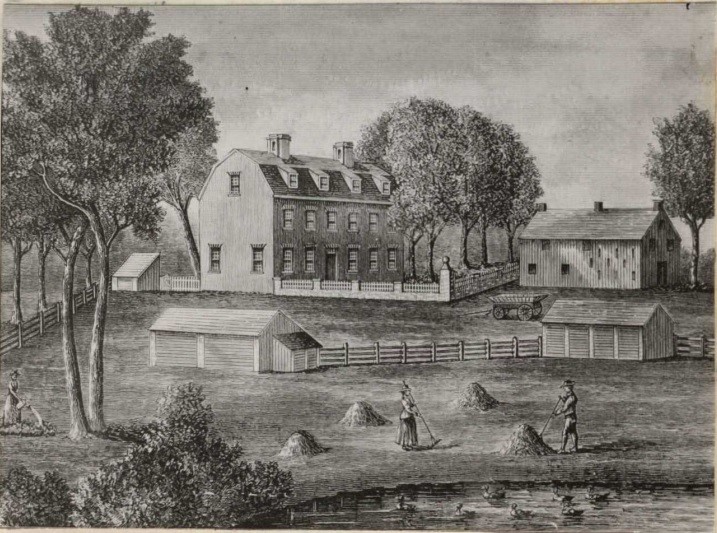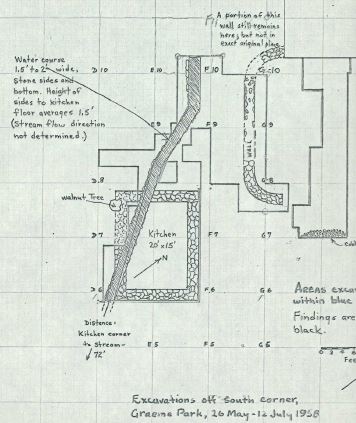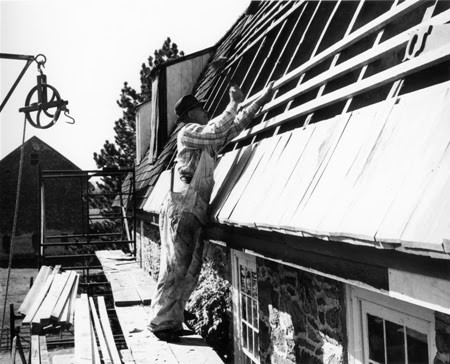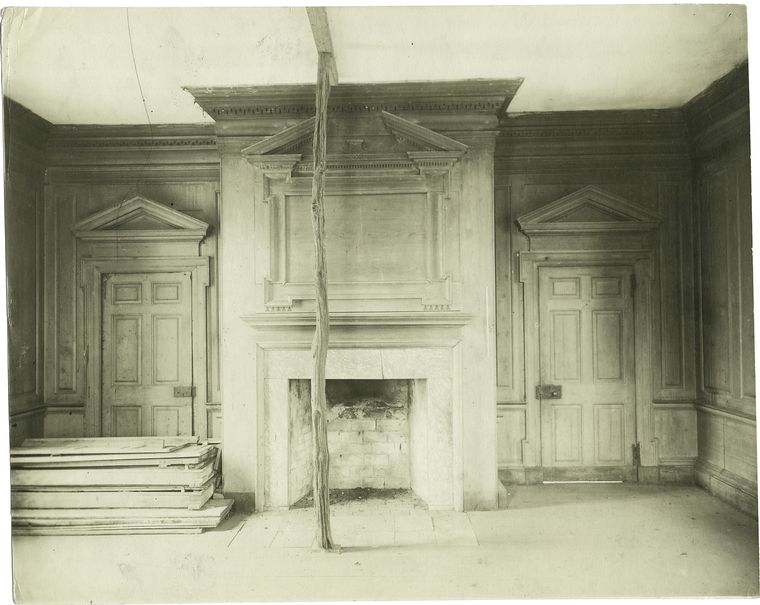In the winter/spring of 2020, the PA SHPO initiated a pilot project to build a toolkit that will help the PHMC develop cultural resource management plans for the properties that we operate.
What is a Cultural Resource Management Plan?
Cultural resource management plans (CRMP) allow agencies and other organizations to integrate historic preservation concerns into their normal operations. These plans:
- describe the cultural resources that fall within the jurisdiction/property of an organization,
- identify preservation priorities,
- and outline procedures for resource identification, evaluation, and mitigation.
The details of such plans will vary depending on the scale of an organization’s holdings, the types of resources that are present or are likely to be identified, and the activities and undertakings that could affect those resources.
We hope that the CRMP model, in turn, will be useful to other state agencies whose land stewardship responsibilities include historic and archaeological places. This project grew out of the ongoing SHPO/DCNR efforts at Laurel Hill and Ridley Creek State Parks, but this time we are taking a look at our own resources.
Pilot Property
We chose Graeme Park in Horsham Township, Montgomery County, which is one of the PHMC sites on the Pennsylvania Trails of History.

The property was donated to the PHMC in 1958 for preservation as a house museum. It became a National Historic Landmark in 1960 and remains open to the public as the only surviving home of a Pennsylvania colonial governor and a fantastic example of 18th century architecture.
A colorful past
Graeme Park was the stage for a fascinating and varied tale about Pennsylvania’s colonial and revolutionary-period history, and it was home to a colorful cast of characters:
- William Keith – the Lieutenant Governor of Pennsylvania from 1717 to 1726 who was dismissed due to his royalist tendencies
- Dr. Thomas Graeme – distant relative of the Keiths, and a respected physician and public official in Philadelphia
- Elizabeth Graeme Fergusson, a poet and the host of America’s first literary salons, but whose later years were marked by financial struggle and political scandal

A nice winter project
The history of Graeme Park and many of its former occupants has been well-researched and published in numerous sources. An in-depth summary can be found in the 1986 historic structures report by Mark Reinberger.
Our purpose with this project was not so much to re-examine the existing scholarship, but to understand what changes have happened to the property during the last 60 years that could affect its significance and integrity.
A different kind of story entirely, but answering these questions is a crucial step in any effort to develop a management plan:
- Have all cultural resources on the property been inventoried and documented?
- What kind of alterations have occurred on the property – such as construction, demolition, renovations, and utility installations?
- How was this work documented, and where are the records stored?
- How much archaeology has been conducted, where was it located, and what was found?
In order to construct the history of PHMC at Graeme Park, we sought clues from a variety of resources held by the State Archives, the Section of Archaeology at the State Museum, and the offices of the PHMC’s Bureau of Historic Sites and Museums. These materials included:
- architectural blueprints and drawings from various restoration and repair campaigns
- academic studies, including garden archaeology and a comprehensive historical analysis
- plans for the proposed reconstruction of 18th century buildings and structures
- data from utility companies
- archaeological excavation reports, field notes, and artifact catalogs
After four months of research, writing, and painstaking reconstruction of excavation maps in GIS, we learned that nothing is simple!
But we now have a firm grasp on 60+ years of research and analysis, architectural renovations, extensive archaeological excavations that uncovered numerous 18th century buildings and structures, and utility projects that have been essential to Graeme Park’s operations as a historic site, museum, park, and wedding venue.
A more recent history
In 1958, the same year that Graeme Park was donated to the PHMC, three major research projects were conducted or published that heavily influenced the PHMC’s early interpretation and restoration of the property. Nancy Wosstroff’s master’s thesis became the authoritative property history and was the basis for subsequent research.
Shortly after, Colonel J. Duncan Campbell conducted the first excavations on the property, and he uncovered significant evidence of many Keith and Graeme-period structures and outbuildings that helped support historically-sensitive reconstructions in the 1960s.

Finally, Robert Raley conducted a detailed architectural analysis of the extant buildings, and the evidence he uncovered helped inform the PHMC’s initial exterior restoration of the Keith House, which was completed by 1960.

Ironically, new excavations during the 1960s called into question the earlier findings, but it took many years for Campbell’s proposals to be wiped from the PHMC’s property improvement plans.
Restoring Graeme Park
Based on evidence from Wosstroff’s thesis and Campbell’s 1958 report, the PHMC drew up plans to fully reconstruct the 18th century landscape at Graeme Park, including an historic driveway, a watercourse features, and numerous outbuildings.
Ultimately, the evidence from five seasons of excavation during the 1960s did not match the original interpretations (although structures and features were identified in other locations), and most of the reconstruction plan was not implemented.
A second restoration and reconstruction campaign was completed between 1968 and 1969. This project included major restorations in the interior of the Keith House, including reconstruction of fire places, extensive plaster work, and repair to the flooring and woodwork.

Reconstructed components outside of the house included the summer kitchen and the south garden—both of which were based on Campbell’s findings.
There is very little on file from the 1970s, but architectural and archaeological work resumed in the 1980s and 1990s.
In 1986, Mark Reinberger completed a historic structures report of the Keith House, and this serves as the most thorough record of the condition of the house, covering a detailed history, full architectural analysis, and maintenance recommendations. His document served to clarify and correct some ambiguities in previous architectural studies.
During this time, very few research-oriented excavations were conducted, although a handful of surveys were completed for property improvement projects.
Next steps
The work described here was completed with the help of two research assistants: Cydney Rader, who graduated with a BA in anthropology from West Chester University of PA in 2018, and Andrew Malhotra, who is currently enrolled in the Applied Archaeology MA Program at Indiana University of PA.
Over the next month, SHPO staff will be finalizing a records catalog, resource documentation for the SHPO’s files, an overview of the research, and a GIS database—all of which can serve as the foundation for a cultural resource management plan. From there, we will distil the materials and lessons learned into a toolkit and methodological case study so that this effort can be replicated at any PHMC site.
Stay tuned for another post about our work at Graeme Park later this year.
One of the many points that has arisen from this endeavor is a reminder that no research is final, and that there is always a need to revisit our past work in order to move into new directions for research, management, and interpretation.
Comment Policy
PHMC welcomes and encourages topic-related comments on this blog. PHMC reserves the right to remove comments that in PHMC’s discretion do not follow participation guidelines.
Commenters and Comments shall be related to the blog post topic and respectful of others who use this site.
Commenters and Comments shall not: use language that is offensive, inflammatory or provocative (this includes, but is not limited to, using profanity, obscene, or vulgar comments); disparage other commenters or people; condone illegal activity; identify the location of known or suspected archeological sites; post personal information in comments such as addresses, phone numbers, e-mail addresses or other contact details, which may relate to you or other individuals; impersonate or falsely claim to represent a person or an organization; make any commercial endorsement or promotion of any product, service or publication.
If you would like to comment on other topics not related to this blog post but related to PHMC, please fill out the PHMC Contact Us Form.
Leave a Reply